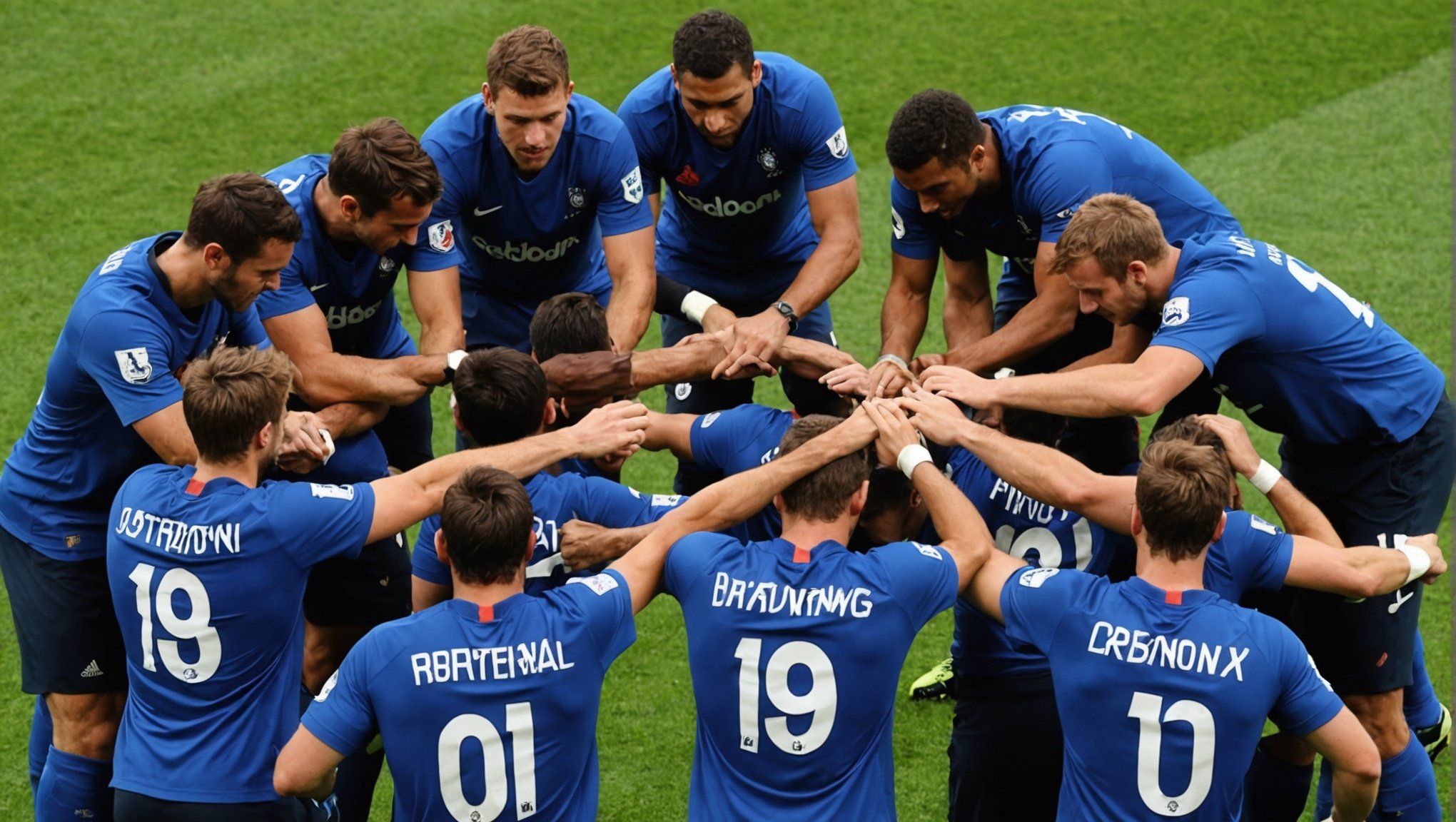Understanding the Role of Social Media in Team Dynamics
In recent years, social media impact has reshaped the sports industry, revolutionising how teams interact, both internally and with fans. The integration of social media in professional sports has facilitated enhanced communication and connectivity among team members, breaking traditional barriers. Social media platforms serve as a bridge, allowing players and coaches to maintain cohesive relationships, which is vital in fostering a sense of unity.
The effective utilisation of social media can significantly influence team dynamics. It empowers teams to develop and sustain their culture, promoting inclusivity and openness. For instance, platforms like Instagram and Twitter enable players to express their personalities, share achievements, and celebrate team successes, thus enhancing team spirit. Moreover, such platforms can streamline communications, enabling rapid information dissemination and feedback, essential in a fast-paced sports environment.
Additional reading : Unlocking Performance Insights: The Role of Continuous Heart Monitoring in Detecting Athlete Overtraining
However, organisations must be mindful of the potential downsides. While beneficial, social media can also distract or lead to misunderstandings if not properly managed. Striking a balance is crucial to leveraging its full potential without compromising team cohesion. Ultimately, integrating social media thoughtfully into team culture can bolster connection and performance in professional sports.
Examples of Social Media Fostering Team Unity
The use of social media can significantly enhance team unity within organizations.
This might interest you : How Biomechanical Analysis Can Help Amateur Golfers Stay Injury-Free: A Comprehensive Guide
Case Study: Successful Teams Utilizing Social Media
One successful example involves a global marketing firm that implemented a dedicated social media platform for internal communication. By leveraging this tool, employees across various locations could engage in real-time discussions and share team unity examples daily. This setup encouraged collaborative brainstorming and strengthened interpersonal relationships. Social media engagement became a routine, fostering a sense of belonging among team members.
Positive Outcomes from Social Media Interaction
Interactive initiatives, such as virtual coffee breaks or storytelling sessions, helped break the ice and bridge geographical gaps. Social media engagement increased transparency, allowing team members to feel more included in decision-making processes. Ultimately, this led to higher morale and improved productivity, as employees were more aligned with the team’s goals.
Lessons Learned from Social Media Practices
Effective use of social media within teams requires clear guidelines and purpose-driven activities. Lessons learned reveal that a balance must be struck between professional and casual content to maintain a cohesive work environment. Additionally, frequent social media engagement can combat isolation, especially in remote settings, ensuring that team members feel valued and united.
Metrics and Statistics on Social Media Engagement
In the dynamic world of sports, Engagement Statistics serve as a crucial measure of a team’s popularity and reach. Social Media Metrics such as likes, shares, and comments reveal how invested fans are in a team’s journey. A high engagement level often indicates robust fan support which can be pivotal for Professional Athletes seeking to build larger followings and endorsements.
For many teams, the correlation between engagement levels and team performance is striking. Winning teams frequently boast higher engagement figures compared to their less successful counterparts, as victories tend to amplify fan interest and interaction. This impact can further elevate as teams leverage stories of triumph, resilience, and player journeys to captivate their audience.
To truly understand and quantify social media success, teams are turning to specific metrics. These include:
- Engagement rate: The ratio of interactions compared to total followers.
- Reach and impressions: The number of users who see the content.
- Community growth rate: Measuring the increase of a follower base over time.
By closely analysing these metrics, sports teams can better strategise their social media content, ensuring that their online presence remains engaging and beneficial for both the team and its supporters.
Expert Insights on Social Media’s Effects
Navigating the realm of social media can greatly impact team dynamics. Renowned sports psychologists and coaches emphasize its dual nature. Dr. Jane Mitchell, an expert in sports psychology, notes, “While social media can enhance team connectivity, it also poses risks, like distraction and reduced focus.” Her insights underscore the importance of balanced usage.
Social media analysis by experts reveals a need for managing its potential pitfalls. Coaches often encounter players distracted by the constant stream of updates and notifications. This shift in focus can adversely affect team psychology, altering communication patterns and cohesiveness. Coaches recommend setting clear boundaries around social media use during team activities.
To foster healthy social media practices within teams, experts offer practical recommendations. Dr. Mitchell suggests enforcing digital detox days where team members disconnect to strengthen interpersonal relationships. Additionally, implementing team guidelines around social media etiquette ensures respectful and supportive interactions.
These expert quotes and analyses highlight the crucial role social media plays in modern sports environments. By understanding its effects, coaches and team psychologists can develop strategies that optimize team performance while safeguarding mental well-being. The goal is to harness social media’s connectivity benefits without succumbing to its potential downsides.
Positive and Negative Potential Impacts of Social Media
In the digital workspace, social media can significantly impact team dynamics, offering both benefits and drawbacks that must be carefully managed.
Positive Impacts on Team Morale
Social media can bolster team morale by providing platforms for recognition and communal celebration. These tools enable team members to easily share achievements and milestones, fostering a sense of unity and motivating peers through positive reinforcement. Moreover, group chats and team forums create a casual environment where employees can openly express ideas and build friendships that extend beyond professional interactions.
Risks and Challenges Associated with Social Media Use
Despite its advantages, social media presents several communication challenges. Over-reliance on these platforms can lead to misunderstandings and fragmented interactions due to the absence of non-verbal cues. Furthermore, the constant stream of information may cause distractions, impacting productivity and team alignment. Balancing social media use with focused, clear communication is essential to avoid misinterpretations.
Strategies to Mitigate Negative Effects
Implementing strategies to harness the positives, while mitigating the negatives, is crucial. Establishing clear guidelines on social media use helps maintain professionalism and focus. Encouraging regular face-to-face meetings can counteract excessive virtual communication, bridging gaps and ensuring all team members are on the same page.
Actionable Insights for Leveraging Social Media
Navigating a successful Social Media Strategy within team dynamics requires careful planning. Begin by integrating Team Communication channels through social platforms. This fosters a Cohesive Environment where members share updates and engage meaningfully. Encourage regular check-ins via social media to maintain open dialogue and a sense of connection.
Establishing a balance between Social Media Strategy and team cohesion is vital. Encourage team members to share insights and achievements, ensuring content is inclusive and representative of everyone’s contributions. A clear guideline can support this balance. It can outline expectations and regulations, focusing on positive engagement.
Moreover, setting guidelines is crucial for athletes, ensuring their Social Media Strategy aligns with team values. This might involve setting boundaries for the type of content shared or establishing protocols for public interaction. Emphasizing respectful and supportive online communication reinforces the Cohesive Environment and protects the team’s public image.
Make social media a positive influence on team dynamics by encouraging communication and connection while protecting individual and collective reputations. Fact-based sharing and mutual encouragement create a productive, harmonious virtual space for the team.











